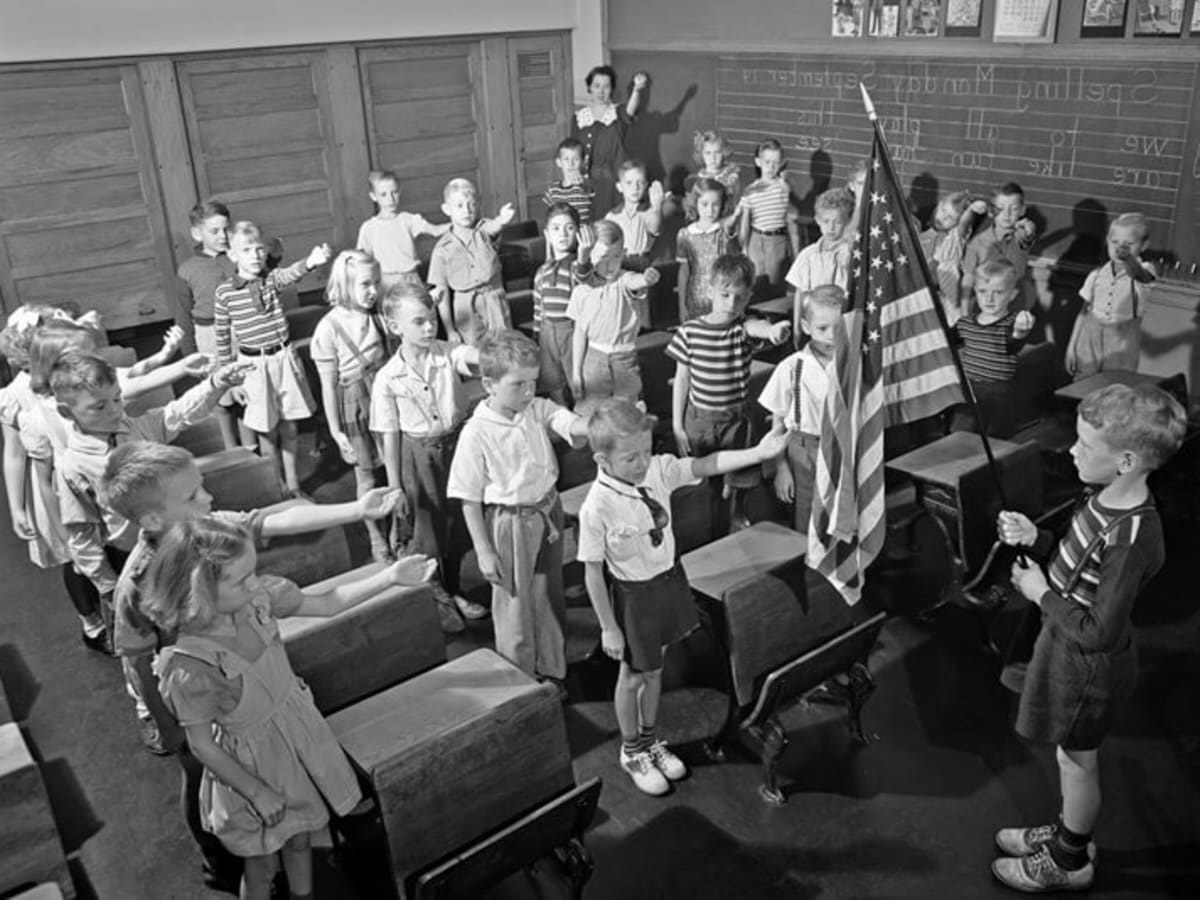
What is the Bellamy Salute? The Bellamy Salute is a gesture that was once used in the United States to accompany the Pledge of Allegiance. Created by Francis Bellamy in 1892, it involved extending the right arm straight out, palm down. This salute aimed to instill patriotism among schoolchildren. However, during World War II, the gesture's similarity to the Nazi salute led to its replacement with the hand-over-heart gesture in 1942. Today, the Bellamy Salute serves as a historical reminder of how symbols can evolve and change meaning over time. Curious about more intriguing facts? Keep reading!
Key Takeaways:
- The Bellamy Salute, created in 1892, evolved from a patriotic gesture to a controversial symbol, ultimately replaced during World War II due to its resemblance to the Nazi salute.
- Despite its controversial history, the Bellamy Salute continues to be studied in schools, offering lessons on the evolution of national symbols and the impact of historical events on cultural practices.
Origins of the Bellamy Salute
The Bellamy Salute has a fascinating history that intertwines with American patriotism and global events. Let's dive into some intriguing facts about its origins.
- The Bellamy Salute was created by Francis Bellamy, a Christian socialist minister, in 1892.
- Bellamy designed the salute to accompany the Pledge of Allegiance, which he also authored.
- The original gesture involved extending the right arm straight out, palm down, towards the flag.
- Bellamy's intention was to create a unified, patriotic gesture for American schoolchildren.
- The salute was first used during the 400th anniversary of Christopher Columbus's arrival in the Americas.
Evolution and Controversy
Over time, the Bellamy Salute evolved and became a subject of controversy, especially during the 20th century.
- In the early 20th century, the salute was widely adopted in American schools.
- By the 1920s, it was a common practice during flag-raising ceremonies and patriotic events.
- The salute's resemblance to the Roman salute, used by fascist regimes, began to raise concerns.
- During World War II, the similarity to the Nazi salute led to widespread discomfort.
- In 1942, Congress officially replaced the Bellamy Salute with the hand-over-heart gesture.
Cultural Impact
The Bellamy Salute left a significant mark on American culture and beyond. Here are some facts about its cultural impact.
- The salute was featured in various American films and media during the early 20th century.
- It became a symbol of American patriotism and unity before World War II.
- The controversy surrounding the salute influenced other countries' gestures of allegiance.
- Some historians argue that the Bellamy Salute's replacement helped distance the U.S. from fascist associations.
- The salute's history is still studied in American schools as part of lessons on patriotism and history.
Legal and Political Repercussions
The Bellamy Salute also had legal and political repercussions, influencing laws and policies in the United States.
- The 1942 change to the hand-over-heart gesture was part of the Flag Code, a set of guidelines for flag etiquette.
- The decision to replace the salute was influenced by public opinion and political pressure.
- Some politicians argued that the Bellamy Salute was un-American due to its resemblance to the Nazi salute.
- The change was seen as a way to promote American values and distinguish the U.S. from totalitarian regimes.
- The legal shift also reflected broader changes in American society during World War II.
Modern Perception
Today, the Bellamy Salute is viewed through a historical lens, with varying perceptions and interpretations.
- Many Americans are unaware of the Bellamy Salute's existence and history.
- Historians and educators use the salute as a case study in the evolution of American patriotism.
- Some view the salute as a relic of a bygone era, while others see it as a cautionary tale.
- The salute's history is often discussed in the context of World War II and the fight against fascism.
- Modern discussions about the salute highlight the importance of symbols in shaping national identity.
Educational Significance
The Bellamy Salute continues to hold educational significance, offering lessons on history, symbolism, and patriotism.
- Teachers use the salute to discuss the impact of historical events on national symbols.
- The salute's history provides a lens for examining changes in American society and values.
- Students learn about the importance of context in interpreting historical symbols.
- The Bellamy Salute serves as an example of how national symbols can evolve over time.
- Educational materials often include the salute in lessons on American history and civics.
Lesser-Known Facts
Here are some lesser-known facts about the Bellamy Salute that might surprise you.
- Francis Bellamy originally intended the salute to be a temporary gesture.
- The salute was initially met with mixed reactions from the public.
- Some schools continued to use the Bellamy Salute even after the 1942 change.
- The salute's design was influenced by Bellamy's views on nationalism and unity.
- Despite its controversial history, the Bellamy Salute remains a fascinating part of American heritage.
The Bellamy Salute's Legacy
The Bellamy Salute holds a unique place in American history. Originally intended to accompany the Pledge of Allegiance, its resemblance to the Nazi salute led to its replacement during World War II. This change highlights how symbols can evolve and take on new meanings over time. The salute's history serves as a reminder of the importance of context and perception in shaping public opinion. While the Bellamy Salute is no longer in use, its story remains a fascinating chapter in the broader narrative of American patriotism. Understanding this salute's journey helps us appreciate the complexities of historical symbols and their impact on society. So next time you recite the Pledge of Allegiance, remember the Bellamy Salute and its unexpected legacy.
Frequently Asked Questions
Was this page helpful?
Our commitment to delivering trustworthy and engaging content is at the heart of what we do. Each fact on our site is contributed by real users like you, bringing a wealth of diverse insights and information. To ensure the highest standards of accuracy and reliability, our dedicated editors meticulously review each submission. This process guarantees that the facts we share are not only fascinating but also credible. Trust in our commitment to quality and authenticity as you explore and learn with us.


